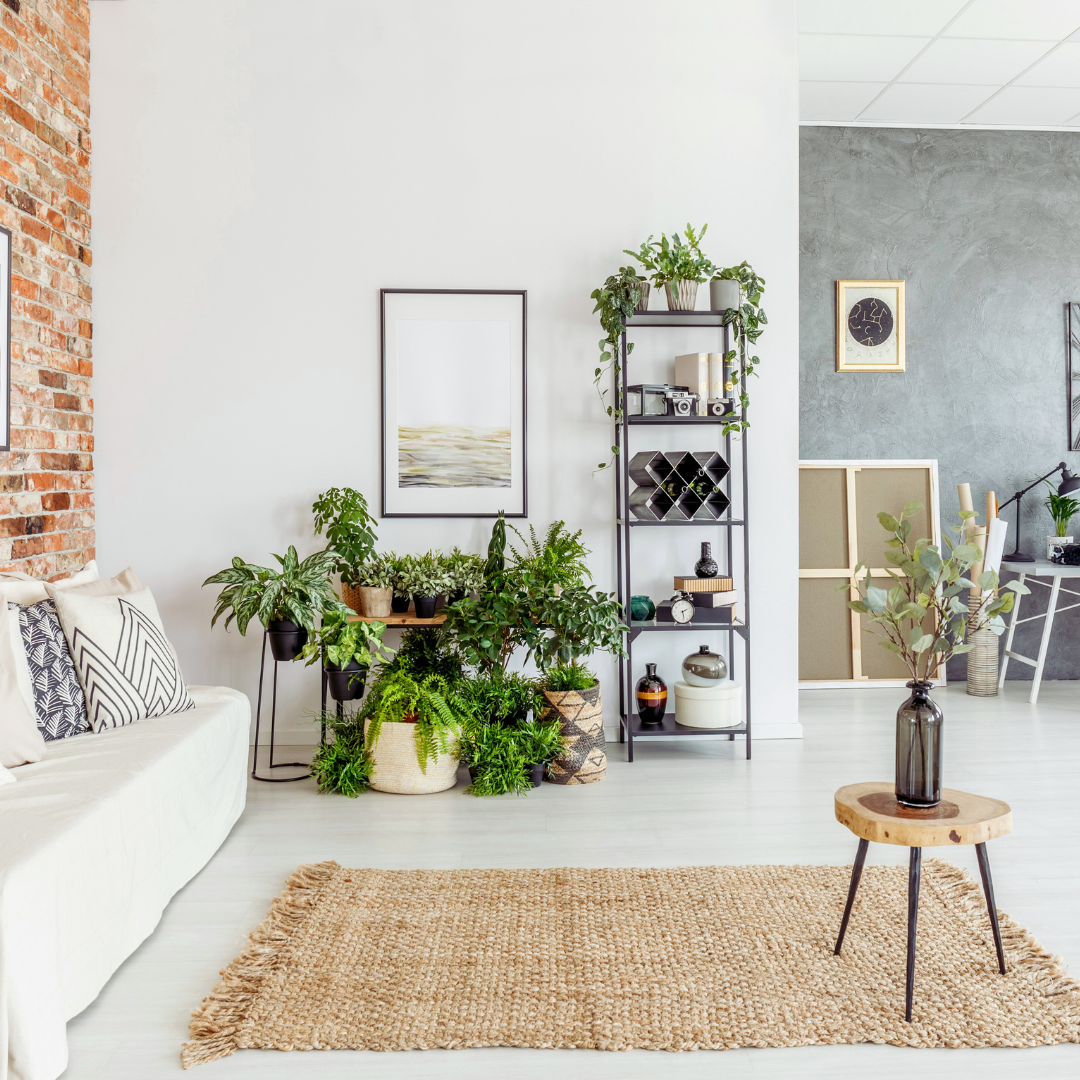Creating a Wellness-Focused Home Design Plan for a Healthier Living Environment
Creating a wellness-focused home design plan can significantly enhance both physical and mental well-being. Prioritising natural light, comfortable furnishings, and tranquil colour palettes leads to a more serene living environment. These elements not only promote relaxation but also encourage a healthier lifestyle.
Integrating plants and mindfulness spaces can further elevate this atmosphere, fostering a sense of connection to nature. Design choices in a home should reflect personal values and well-being priorities, allowing for spaces that nurture the mind and body.
As one embarks on this journey, understanding the impact of each design element becomes crucial. Thoughtful arrangements and intentional decor can transform any space into a sanctuary that supports a wellness-oriented lifestyle.
Core Principles of Wellness-Focused Home Design
Creating a wellness-focused home design involves understanding how the built environment affects health and well-being. Key principles include prioritising mental and physical health through thoughtful design and incorporating natural elements to enhance tranquillity and connection to nature.
Understanding the Impact of the Built Environment
The built environment is critical in shaping individuals’ mental health and well-being. Design elements such as space layout, lighting, and materials can influence mood and functionality.
- Natural Light: Ample natural light helps regulate circadian rhythms, promoting better sleep and mood.
- Acoustics: Attention to sound insulation can reduce stress and create a peaceful atmosphere.
Homes designed with wellness in mind consider how these elements contribute to a calming and effective living space.
Prioritising Health and Well-Being Through Design
When prioritising health and well-being, every aspect of home design should support physical and mental health. This includes spaces that promote active living, relaxation, and social interaction.
- Functional Spaces: Design areas that encourage movement, such as open-plan layouts or dedicated fitness zones.
- Materials Choice: Choosing non-toxic, sustainable materials ensures air quality remains high, reducing health risks.
A focus on wellness-driven design can create spaces that foster a sense of belonging and improve overall quality of life.
Incorporating Biophilic Design and Natural Elements
Biophilic design seeks to create a strong connection between indoor spaces and the outdoors. Incorporating natural elements can greatly enhance tranquillity and promote well-being.
- Plants: Integrating indoor plants can improve air quality and create a calming effect.
- Natural Materials: Using wood, stone, and other organic materials can evoke a sense of nature within the home.
Designers should consider views of nature, natural light, and tactile materials, fostering an environment that encourages relaxation and mental clarity.
Essential Elements for a Wellness Sanctuary
Creating a wellness sanctuary involves integrating design elements that enhance well-being. Key aspects include natural light, sustainable materials, relaxation areas, and improved air quality.
Utilising Natural Light and Advanced Lighting Solutions
Natural light plays a crucial role in promoting well-being. Ample daylight exposure can positively affect mood and energy levels. Designing spaces with large windows or skylights allows the sun to bathe interiors in natural light throughout the day.
In addition to daylight, advanced lighting solutions significantly contribute to wellness. LED lighting can mimic natural sunlight and provide various colour temperatures for different times of the day. Dimmable lights enable users to adjust brightness levels according to their activities, fostering a relaxing atmosphere in the evening.
Using smart home technology allows for tailored lighting schedules, optimising energy use while enhancing emotional health and comfort.
Choosing Sustainable and Natural Materials
Selecting sustainable and natural materials is vital for a wellness-focused design. Bamboo, cork, and reclaimed wood are eco-friendly options that reduce environmental impact. These materials not only add aesthetic value but also improve indoor air quality.
Natural textiles, such as organic cotton and linen, further support sustainability while creating a comfortable living environment. They are free of harmful chemicals and promote better health.
Utilising low-VOC (volatile organic compounds) paints and finishes ensures that harmful emissions are minimised, contributing to safer indoor conditions.
Designing Spaces for Relaxation and Better Sleep
Spaces dedicated to relaxation are essential in a wellness sanctuary. Areas with comfortable seating, soft furnishings, and tranquil colour schemes enhance the mood and encourage unwinding.
Incorporating aromatherapy can also promote relaxation. Using essential oils, such as lavender and chamomile, through diffusers or candles can create a soothing ambience.
For better sleep, designing bedrooms with blackout curtains and noise-reducing measures is beneficial. A quiet, dark environment encourages restful nights and restorative sleep, essential for overall health.
Enhancing Indoor Air Quality and Ventilation
Maintaining high indoor air quality is essential for health and comfort. Good ventilation systems allow fresh air to circulate, reducing indoor pollutants. Incorporating windows that can be opened enhances airflow, especially in areas like kitchens and bathrooms.
Using air-purifying plants, such as spider plants and peace lilies, helps filter toxins while adding natural beauty.
Installing air purifiers with HEPA filters removes allergens and improves respiratory health. Regular maintenance of HVAC systems can also prevent dust and mould buildup, ensuring cleaner air throughout the home.
Incorporating Mindfulness and Wellness Practices
Creating a wellness-focused home design involves integrating mindfulness and wellness practices. This can enhance the living environment, promoting relaxation and mental clarity.
Creating Spaces for Meditation and Yoga
Designating specific areas for meditation and yoga can significantly benefit mental health. These spaces should be serene, away from daily distractions. Natural light is crucial; large windows or soft lighting can create a calming atmosphere.
Using natural materials, such as bamboo flooring or cotton mats, enhances the sensation of grounding. Minimalist decor is effective, as clutter can disrupt focus. Adding soundproofing can also help maintain tranquillity, allowing for a pure mindfulness experience.
Incorporating personal elements, such as inspiring artwork or healing crystals, can personalise the area. Ensuring easy access to yoga props, like blocks and straps, encourages regular practice.
Integrating Art Therapy and Colour Psychology
Art therapy can be a vital component of wellness. Designating a small nook or room for creative activities can promote relaxation. This space should feel inviting and comfortable, encouraging expression through art.
Colour psychology plays a significant role in setting the mood. Soft blues and greens can evoke calm, while warm colours like yellows can energise.
Art supplies should be readily available, allowing for spontaneous creativity. Displaying completed artwork can enhance a sense of accomplishment. This can transform spaces into inspiring environments, encouraging positive emotional responses.
Bringing Nature Indoors with Greenery and Water Features
Incorporating greenery promotes well-being and improves air quality. Indoor plants, such as peace lilies and snake plants, provide aesthetic and health benefits. A healing garden can be beneficial, featuring herb pots or small flower arrangements for sensory engagement.
Water features, such as small fountains, add soothing sounds to spaces. The gentle trickle of water can enhance relaxation, making it an excellent addition to mindfulness areas.
Positioning plants near windows ensures they receive ample light. Regular maintenance keeps these elements healthy and promotes a continuous reminder of nature’s calming presence within the home.
Practical Design Ideas for Holistic Wellbeing
Incorporating practical design ideas into home spaces can significantly enhance personal wellness. Focusing on privacy, comfort, outdoor connections, and sustainable elements will foster a serene atmosphere that promotes health and well-being.
Enhancing Privacy and Comfort in Everyday Living
Creating private areas within the home is key to fostering comfort and serenity. Thoughtfully placed partitions, soundproofing materials, and dense vegetation can enhance the sense of seclusion in shared spaces.
Seating Options
Comfortable seating, such as oversized sofas and cushioned chairs, promotes relaxation. Incorporating soft textiles like organic cotton or linen can further enhance a calming atmosphere.
Functional Layout
A functional design, including open floor plans, allows for easy movement without feeling overcrowded. Designating specific areas for relaxation—like reading nooks or meditation corners—can also support mental wellness and stress reduction.
Designing Outdoor Spaces for Social Support and Connectedness
Outdoor spaces play a vital role in connecting individuals with nature and one another. Incorporating seating arrangements, such as benches or picnic tables, encourages social interaction.
Greenery and Ambiance
Utilising plants and trees can create a natural sanctuary. Incorporating features like a fire pit or water fountain enhances the ambience, making outdoor areas inviting and conducive to gatherings.
Flexible Spaces
Designing outdoor spaces to accommodate various activities, from yoga to family picnics, increases functionality. Using durable, weather-resistant materials ensures these spaces are enjoyable year-round, promoting well-being through social support.
Wellness Retreats and Personal Bath Spaces
Incorporating a wellness retreat within the home can provide a sanctuary for relaxation and self-care. Personalised bath spaces are essential to this concept.
Spa-Like Features
Incorporating features like soaking tubs, rain showers, and heated floors creates a spa-like experience. Natural materials such as stone or bamboo can invoke an earthy, grounding ambience.
Personal Touches
Adding elements like aromatherapy diffusers, mood lighting, and calming colour palettes can enhance relaxation. This personalisation fosters a strong connection to mental wellness and overall health benefits.
Sustainable Innovations: Water Conservation and Solar Panels
Emphasising sustainability in design promotes a healthy environment. Integrating water conservation systems can significantly impact resource efficiency.
Water-Saving Fixtures
Installing low-flow taps and dual-flush toilets reduces water usage without sacrificing functionality. Collecting rainwater through barrels can provide a practical irrigation solution for gardens.
Solar Panel Integration
Incorporating solar panels into home designs actively supports eco-friendliness. This not only reduces energy bills but also contributes to a healthier planet, aligning with holistic well-being principles.
These design ideas, when judiciously applied, create harmonious spaces that support both individual and environmental health.


